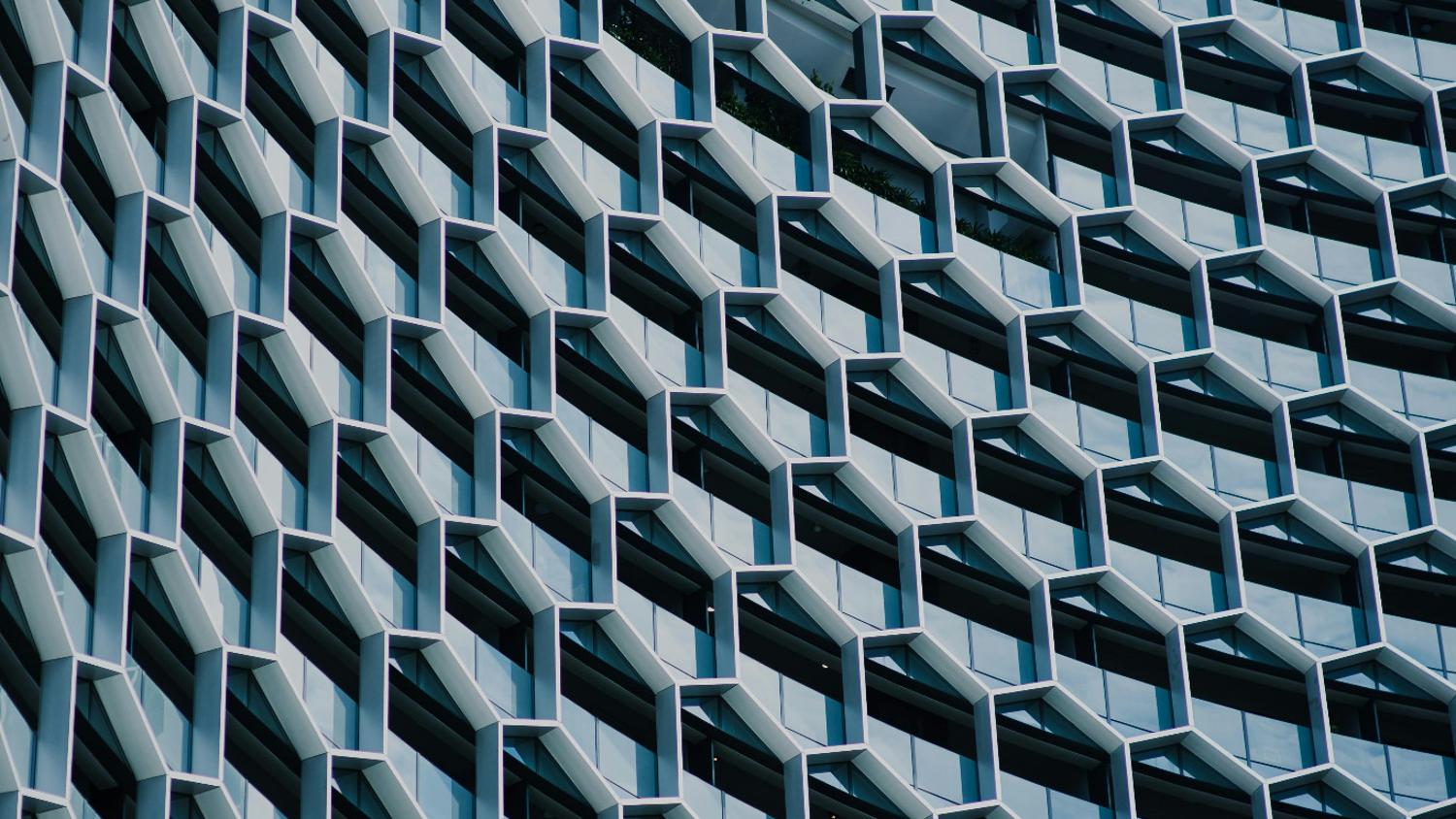
Honeycomb in Architecture and Design: What Bees Teach Us About Buildings, Cities, and Comfort
Table of Contents
-
Why Honeycomb? The Geometry That Saves Material and Adds Strength
-
Structure 101: How Honeycomb Handles Load, Buckling, and Failure
-
Materials & Panels: Sandwich Cores, Skins, and Where They Shine
-
Climate Craft: Daylight, Shade, Airflow, and Thermal Comfort
-
Sound Matters: The Hum That Beats the Echo
-
Fabrication & Speed: Modularity, Prefab, and Site Reality
-
Urban Nature: Hosting Pollinators Without Turning Your Building into a Hive
-
Parametrics: Data-Driven Honeycomb That Responds to Sun, Wind, and Views
-
Pitfalls: When a Hex Pattern Is Just Cosmetic
-
World Examples: A Short Atlas of Honeycomb-Inspired Architecture
-
Conclusion: What Bees Have Taught Us – and Where Honeycomb Design Goes Next
Why Honeycomb? The Geometry That Saves Material and Adds Strength
Nature is a relentless engineer, and the bee’s honeycomb is one of its simplest yet most profound masterpieces. Each hexagonal cell in a hive is more than just storage – it's a triumph of efficiency. The geometry behind the honeycomb is a lesson architects, engineers, and materials scientists return to again and again: hexagons fit snugly together with no wasted space, each wall shared, every corner contributing to both strength and economy.
What makes the honeycomb so useful for buildings and engineered materials? At its heart, the hexagonal grid offers several unique advantages:
-
Maximum surface area with minimum perimeter: This means using less material to enclose more space, which is critical in both nature (saving wax) and construction (saving concrete, steel, or composites).
-
Efficient load distribution: Each hexagon is surrounded by six neighbors, allowing forces to be shared in multiple paths. This reduces the risk of catastrophic failure and distributes both everyday loads and accidental stresses across the structure.
- Structural redundancy and fewer weak spots: Unlike squares or triangles, which can localize stress, the honeycomb’s web of connections helps prevent cracks or local defects from spreading rapidly.
-
Stiffness-to-weight superiority: Honeycomb panels and structures provide excellent rigidity without excess mass, making them essential for lightweight floor panels, strong yet light facades, and long-span roofs in both architecture and transportation.
That’s why honeycomb grids are found from ancient domes to today’s sandwich panels, ceiling baffles, and high-tech facades. These systems not only provide great stiffness and load-bearing with little weight, but can also help moderate temperature, diffuse daylight, and buffer noise – bringing natural comfort to architectural spaces.
Takeaway: The honeycomb grid is more than a pretty motif – it’s a dynamic blueprint for building lighter, stiffer, and more sustainable structures. Its legacy, from the hive to the high-rise, is the promise that true strength comes from working with nature’s logic, not against it.
Structure 101: How Honeycomb Handles Load, Buckling, and Failure
Step beneath a hex-patterned canopy and you realize: silence comes from distributed action. The genius of the honeycomb structure is that it splits stress early, across short, connected members.
- Loads spread evenly, reducing the risk of buckling.
- Each hex shares the strain, so local failures don’t spread catastrophically.
- Adjacent cells brace each other, forming an interdependent "multi-path truss."
While traditional frames rely on a few strong beams, honeycomb systems hire many small actors – bees’ logic! This improves resilience while lowering structure mass. Buildings feel quieter, safer, and more durable in harsh climates and seismic zones.
Materials & Panels: Sandwich Cores, Skins, and Where They Shine
Pick up an aluminum honeycomb panel and you’re holding the future of lightweight construction. With a hollow, hexagonal core and strong external skins, panels achieve high strength-to-weight ratios and uniform stress distribution.
-
Cores: aluminum, aramid (Nomex), recycled paper.
-
Skins: stone veneer, fiberglass, engineered wood, stainless steel.
Applications:
-
Canopies and museum ceilings (long spans, low mass).
-
Lightweight cladding and seismic retrofits.
-
Cleanroom doors and prefab office walls – insulation and strength with low weight.
Modular panels snap together, following the cell-by-cell logic of hive-building – speeding installation and reducing errors.
First-hand feel: You don’t need thickness to feel safe – just the right geometry.
Climate Craft: Daylight, Shade, Airflow, and Thermal Comfort
A bee’s hive breathes: it admits light, keeps out glare, cools, and retains warmth. Honeycomb patterns allow buildings to do the same:
-
Daylighting: Vary cell depth – deeper against harsh sun, shallower for soft light.
-
Solar control: Hex screens act as brise-soleil, adjustable for the season.
-
Ventilation: Hex baffles guide air, producing gentle, low-velocity cooling.
-
Thermal buffering: Fill selected cells with insulation, or phase-change packs, to regulate swings.
Result? Comfort that feels natural – air is gentle, light is soft, temperature is stable.
Passive climate craft trims energy demand and brings the outside in, without hassle.

Sound Matters: The Hum That Beats the Echo
Bees produce hum, not harsh echoes. Designers have learned from the hive:
-
Perforated hex panels and honeycomb baffles diffuse sound, scattering reflections.
-
Cells filled with mineral wool absorb noise efficiently.
-
Speech stays clear in busy lobbies, classrooms, and offices.
Proper honeycomb acoustics help people feel calmer in public spaces – making the hum a virtue.
Fabrication & Speed: Modularity, Prefab, and Site Reality
Just as bees add cells one by one, modular construction uses honeycomb logic for speed and precision:
-
Repetitive modules – hex "cassettes" – snap to primary frames easily.
-
Factory-built parts reduce on-site errors.
-
Installation speeds up, waste drops, and grid absorbs minor misalignments.
This efficiency is critical for tight schedules, urban sites, and sustainable building programs.
Crews mirror bees: efficient, focused, collaborative.
Urban Nature: Hosting Pollinators Without Turning Your Building into a Hive
You don't need a rooftop apiary to support bees!
-
Native flower strips: Plant bands of wildflowers on green roofs with staggered blooming schedules.
-
Solitary bee hotels: Integrate hex blocks into facades for local pollinator nesting.
-
Viewing windows: Design safe glass panels for educational encounters—school kids watch bees at work.
Buildings help balance urban ecology, supporting pollinators without risk or inconvenience – making cities more livable and resilient.
Parametrics: Data-Driven Honeycomb That Responds to Sun, Wind, and Views
Bees practice analog parametrics; architects use digital tools:
-
Inputs: Sun angle, wind direction, noise levels, and view cones.
-
Outputs: Cell size, depth, angle, porosity adjusted per panel.
Dynamic honeycomb facades respond to solar load, optimize daylight and shade, and breathe differently meter by meter.
Performance is measurable and visible – architecture adapts and lives along with its environment.
Pitfalls: When a Hex Pattern Is Just Cosmetic
As honeycomb design rises in popularity, so do failed imitations:
-
Slapping hex patterns on glass for aesthetics, without considering heat gain, dust accumulation, or bird safety.
-
Creating cosmetic screens that trap heat, obscure views, and complicate cleaning.
Recommendations:
-
Link cell geometry to targets: insulation (U-value), daylight autonomy, glare reduction, RT60 for acoustics.
-
Incorporate drainage, cleaning access, and protection for wildlife.
Bees never decorate for decoration’s sake. In architecture, every detail should serve a clear purpose.

World Examples: A Short Atlas of Honeycomb-Inspired Architecture
The Hive, Royal Botanic Gardens Kew (London, UK):
A multi-layered lattice sculpture that converts real hive vibrations into light and sound, immersing visitors in the invisible rhythms of bee colonies.
Eden Project Biomes (Cornwall, UK):
Geodesic domes composed of hexagonal and pentagonal ETFE panels, forming giant greenhouses that are structurally efficient and energy-saving.
Beijing Water Cube (China):
An Olympic landmark with thousands of ETFE “pillows” in a honeycomb-like foam pattern, delivering insulation, dramatic natural light, and a glowing effect at night.
Al Bahar Towers (Abu Dhabi, UAE):
Kinetic honeycomb shading modules open and close in response to sunlight—a climate-adaptive facade inspired by bee geometry.
Albany Marina Residences (Bahamas):
Hexagonal loggia facades offer deep shade and identity, combining design with functional solar control.
Museo Soumaya (Mexico City):
Metallic skins lined with gleaming hex tiles, transforming the museum’s curves into a celebration of cellular structure.
Transit Hubs, Museums, Airports:
Lightweight honeycomb panels support long spans and acoustics, proving nature’s pattern works at city-scale.

Conclusion: What Bees Have Taught Us – and Where Honeycomb Design Goes Next
The honeycomb isn’t just nature’s artwork – it’s a masterclass in engineering. Bees show us that intelligent geometry can trim waste, add strength, spread comfort, and adapt to changing conditions – all at once. The next chapter in architecture will be more parametric, more responsive, and deeply connected to its environment:
-
Facades tuning themselves cell by cell.
-
Modular cassettes that are easy to install, swap, or maintain.
-
Design integrating nature – pollinator shelters, green roofs, educational features.
Yet the honeycomb warns against empty pattern: every module must measure up in performance, maintenance, and ecology. True bee-inspired design sets targets – energy use, acoustics, bird safety – and details every step.
Let’s build like bees: intelligently, collectively, and with respect for the world around us. Progress comes from small, smart choices – every cell earning its keep. That’s architecture with principle, not just pattern. And that’s a future worth building.
Inspired by what bees teach us? At Honeyflo, we celebrate every drop and every design born from the hive – explore our raw honey and see how nature’s logic sparks new solutions, from the comb to the city.



